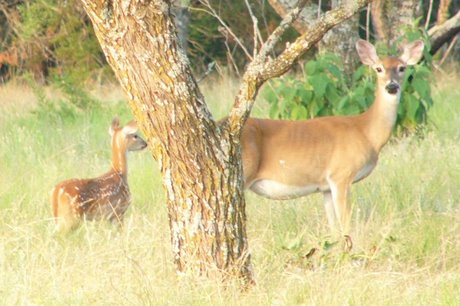
Very little research has been done with wildlife species in relation to the consequences of suboptimal nutrition conditions on estrous cyclicity and reproductive capability. White-tailed deer in Texas ideal for such research due to the reproductive seasonality and common reproductive failure when food quality and quantity is low. A research study out of Texas A&M University – Kingsville is studying the effects of reduced food intake on white-tailed deer estrous cyclicity through the evaluation of several specific nutritional measurements.
In the first year of the study, mature whitetail does were fed “all they could eat” on a high nutritional diet and bred. In the second year, doe diet was restricted from September through November and even up into mid-January and bred.
Blood (for blood serum analysis) was drawn, weights were taken, and rump fat was measured on a monthly basis during the non-breeding season, and weekly during the breeding season for both years of the research project. Data were then analyzed.
From this study, it was conclusively determine that late fall and early winter nutriton does play a role in white-tailed deer reproductive cycle by delaying estus and increasing the number of cycles that occurred before fertilization (it’s hard to get pregnant when does are not in good condition). Not surprisingly, data also showed decreases in weight, overall deer body condition, and rump fat.
Thus, late fall up to early winter is very important for deer herd managers to impact and influence fawn production, so make sure the plant communities on your property is properly managed deer habitat. Also, does in poor condition are going to take longer to get bred, which is going to prolong both your breeding and fawning seasons. It will also take a toll on those bucks!